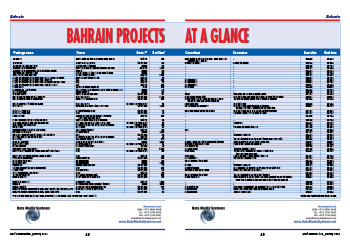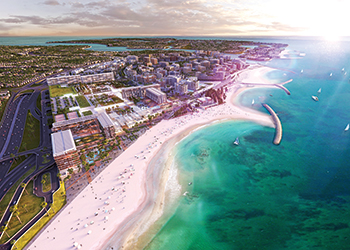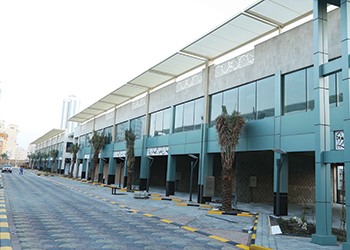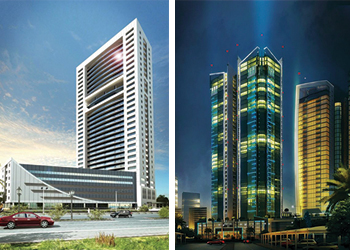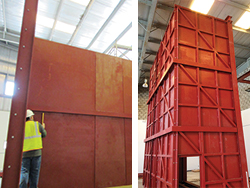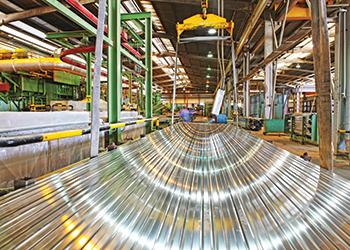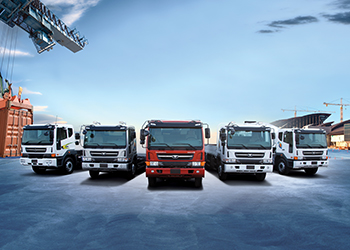

Despite the slump in oil prices, Bahrain is pushing ahead with its key projects, which in 2016 could spell good news for the aviation and hospitality sectors, says DHUSHIYANTHI RAVI.
Multi-billion-dollar transport projects and world-class luxury developments will top Bahrain’s infrastructure initiatives, as the nation pushes ahead with its ambitions despite the low oil prices that threaten to cast a shadow on its growth plans.
A significant boost in investment in the form of government spend and GCC funds amounting to $10 billion over a 10-year period are expected to fuel growth in the construction sector. A $32-billion investment plan will help maintain Bahrain’s growth momentum and support its long-term development, according to Prince Salman bin Hamad Al Khalifa, Crown Prince, Deputy Supreme Commander, First Deputy Premier and Economic Development Board (EDB) chairman.
According to the EDB, the country’s continued diversification efforts have led to stable economic growth, which was forecast to reach 3.6 per cent in 2015, and the contribution of the financial services, manufacturing, and construction sectors now exceed that of the oil sector, which contributes only a fifth of gross domestic product (GDP).
Among the most eagerly awaited projects now is the $1.1-billion Bahrain International Airport (BIA) expansion project, contract awards for which are expected over the next few months. Other big-ticket infrastructure projects include the proposed King Hamad Causeway, which will be the second bridge connecting Saudi Arabia, and Bahrain’s rail project, which will form part of the 2,177-km-long GCC rail network.
In the industrial sector, Bahrain looks set to push ahead with the expansion of Aluminium Bahrain (Alba), which on completion in January 2019 will become the largest single-site aluminium smelter in the world, Construction of Alba’s $3.5-billion sixth potline will boost the smelter’s annual output by 514,000 tonnes to 1.45 million tonnes a year.
Social housing projects, undoubtedly, star in the infrastructure blueprint drawn up by the country as Bahrain strives to tackle its pressing housing shortage. At least five major social housing schemes are under construction including Northern Town and a 5,000-unit housing scheme coming up in Sitra as part of the country’s plan to build 40,000 homes.
Some of the stellar projects on the commercial landscape are continuing to draw new investors. For instance, the $2.5-billion Bahrain Bay project will soon see the development of the mixed-use Water Bay to be developed by Bin Faqeeh while Diyar Al Muharraq off Muharraq island has attracted the UAE-based Eagle Hills, which expects to break ground soon on the first phase of Marassi Al Bahrain, a luxury mixed-use development set to take shape on the eastern shores of the island development.
Meanwhile, in the south of the island nation, plans have been announced for the Anantara Durrat Al Bahrain resort located on Durrat Al Bahrain, which spreads across a cluster of 15 spectacular islands. Other resorts on the cards for Bahrain include the Fairmont Bahrain Resort being built in the Al Jazayer area for completion in 2018.
In the healthcare sector, plans have been mooted for the multi-million-dollar King Abdullah Medical City, which will be financed through a $266.3-million Saudi grant.
Airport expansion
Bahrain’s ambitious plan to boost the capacity of its international airport is set to take flight with seven contracts expected to be awarded shortly, according to Transportation and Telecommunications Minister Kamal Ahmed.
Key details including blueprints of the plan are expected to be unveiled during the Bahrain International Airshow later this month (January 21 to 23).
The expansion of the passenger terminal building at the Bahrain International Airport will increase capacity to 14 million passengers annually.
The upcoming contracts, which signal a key stage in the $1.1-billion airport expansion project, include main works and infrastructure, piling works, passenger loading bridges, baggage handling systems, horizontal and vertical passenger transport systems, information and communications technology (ICT) and security screening equipment.
Enabling works awarded under two packages are currently under way to relocate existing utilities and facilities away from the footprint of the existing passenger terminal to make way for construction to start.
Rail & causeway
Bahrain is planning an investment of $10 billion to build a railway line connecting to the GCC rail network and a second causeway linking the country with Saudi Arabia. A feasibility study has been conducted by Canadian engineering consultancy SNC Lavalin on the construction of the King Hamad Causeway, which will include the rail link. Two routes have been proposed for the 87-km rail link that will connect two stations on either side of the water, with Bahrain’s station expected to be built on reclaimed land north of the existing King Fahad Causeway. According to Maryam Jam’an, Transportation and Telecommunications Ministry under-secretary for land transport, the railway project is estimated to cost $5 billion and the King Hamad Causeway another $5 billion. Based on preliminary studies, the rail link will comprise 28 km of approach tracks, a 26-km causeway and a 10-km bridge. Trains will travel at up to 120 kmph and the feasibility study estimates that it could carry up to 143,000 containers in the first year of operation, rising to 343,000 in 2030 and 602,000 by 2050.
Another key project in the transportation sector is the fourth Muharraq Crossing, which forms part of the Phase Two of Muharraq Ring Road Project and fourth crossing project. The project extends over 7.8 km and includes the Muharraq Ring Road and the causeway between the Interchange of Saya Project and North Manama Causeway (see separate article).
Housing
Bahrain’s efforts to spearhead its social housing projects recently saw the laying of the foundation for a 5,000-unit housing scheme in East Sitra. Housing Minister Bassem Al Hamer said the project represents a key step in the ministry’s commitment to deliver 25,000 units in four years. It is among the five housing projects planned across Bahrain, which also include East Hidd, Northern Town, Southern and Al Ramli housing developments.
Construction work is under way on 3,895 houses in Northern Town and East Hidd. The Ministry of Housing has also tied up with the private sector for the construction of housing units in Northern Town, where some 1,985 units are being built in partnership with Naseej – of which 1,618 homes have been allocated for social housing and 367 units for economic housing, with priority given to the names in the ministry’s waiting list.
In addition, the Ministry of Housing has signed a major agreement with Diyar Al Muharraq, one of the country’s leading urban developers, for the purchase of 3,100 residential units at its upcoming residential project.
The deal for the new housing units, which will be enrolled under the Ministry’s Social Housing Programme, was sealed by the ministry for BD276 million ($727 million). The units are expected to be handed over in December 2018.
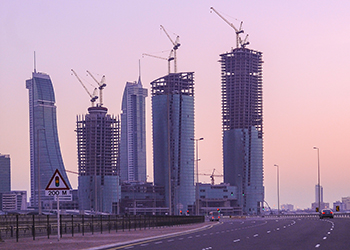 |
Villamar at the Harbour... one of the key projects that are being revived. |
Bahrain will soon be home to world-class projects in the residential and commercial sectors.
Although the country has seen numerous projects put on hold particularly since the global financial crisis of 2008 and Arab Spring in 2011, what has been particularly encouraging are the intiatives being taken to relaunch projects such as the Villamar at the Harbour, which forms the residential component of the Bahrain Financial Harbour in central Manama, and the Marina West. These moves have been made following the intervention of the Ministerial Committee for Construction and Infrastructure designated by the cabinet to study stalled real estate projects.
Last month, developer Gulf Holding Company (GHC) appointed Danish engineering consultancy firm Cowi to provide consultancy services for the construction work related to its $700-million Villamar at the Harbour project.
The integrated residential and commercial complex consists of three twisted towers and 850 residential units in total, including lifestyle apartments with one to five bedrooms, floating sky villas, retail outlets and a quiet boardwalk at the heart of Bahrain Financial Harbour (BFH). Work on the project was initiated in 2007 and was stalled midway through construction during the financial crisis.
Meanwhile, Bahrain Bay, which lies adjacent to the BFH, has recorded impressive growth (see separate article). The waterfront real estate development is now home to the distinctive Four Seasons Hotel Bahrain Bay, Arcapita Bank global headquarters and the winding United Tower by Cooperation Investment House (CIH) which will house the Wyndham Grand hotel. One of the latest major investors in the development, Bin Faqeeh Real Estate Investment Company, is developing Bahrain Bay’s first residential complex called Water Bay.
Diyar Al Muharraq, another island development, has also drawn investors including the UAE-based Eagle Hills, which expects to break ground soon on the first phase of Marassi Al Bahrain, a luxury mixed-use development to take shape on the eastern shores of the island development off Muharraq (see separate article).
Diyar Al Muharraq was also in the limelight late last month when the doors to the $100-million Dragon City were opened. Spread over a total land area of 115,000 sq m, the project is the first of its kind development in Bahrain comprising the Dragon Mall and a themed “Dining Village” (see separate article).
Among other developments, Durrat Al Bahrain, the island development in the south of Bahrain, will host an Anantara Durrat Al Bahrain resort, following a tie-up between Thailand-based Minor Hotel Group (MHG) and Mumtalakat Holding Company, the kingdom’s investment arm. The hotel will be the first hospitality component in Durrat Al Bahrain, and will be an integrated destination project for leisure, business, and Mice (meetings, incentive, conferences and exhibitions) guests visiting Bahrain. Slated to open in 2018, Anantara Durrat Al Bahrain Resort will offer a total of 220 keys, including Lagoon View and Lagoon Access rooms, Beach Pool Villas and Overwater Pool Villas.
Other landmark developments in this sector include the Bahrain Marina Development scheme and the Avenues mall along King Faisal Highway.
Construction work on the Bahrain Marina development project, being developed by Bahrain real estate company Amlak, is expected to commence by the third quarter of this year. Covering the existing area of the current Marina Club along the King Faisal Corniche, it will offer state-of-the-art residential, entertainment, leisure and marina facilities in the heart of Manama. Set for five-star status, the Bahrain Marina is integrated with landscaped gardens and an abundance of water features.
The Avenues will be built opposite the Bahrain Bay. In addition to a BD35-million ($93 million) waterfront mall, the project offers public access to a 1.5-km stretch of coast including children’s outdoor play areas, a running track and outdoor gym sets, as well as waterfront restaurants and cafes, retail outlets, a suq, an indoor market and entertainment options such as movie theatres, children’s arcades and a public park covering 85 per cent of the site.
Another mall development is under way in Janabiya. The $30-million mall will include a supermarket and three anchor restaurants as well as 23 retail units. The project is being funded by Kuwait Finance House through First Bahrain Real Estate Development Company, designed by Sanad Engineering and built by Almoayyed Contracting Group.
Meanwhile, work is nearing completion on the Galleria in Zinj, a Dadabhai project, located on the Sheikh Isa bin Salman Highway offering over 40,000 sq m of gross leasable area (see separate article).








.jpg)




.jpg)




























.jpg)

































